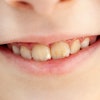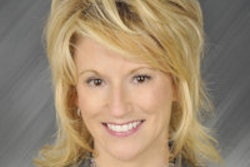Three big dental insurers want the District of Columbia health insurance exchange to add standalone children's dental plans.
Delta Dental, MetLife, and Guardian Life Insurance Company of America say a market for standalone dental coverage for children would help their families buy better coverage for their children and cut dental bills, according to a benefitspro.com story.
But advocates for pediatric dental care question whether standalone dental coverage will be a viable product, and medical insurers say building children's dental benefits into all exchange plans is easier and better for the children.
The District of Columbia dental exchange authorities were scheduled to discuss 2015 dental plan options this week.
The Patient Protection and Affordable Care Act requires exchange plans to cover a group of essential health benefits that includes dental benefits for children. Exchanges can meet the requirement by offering standalone dental plans for children, even if the major medical plans don't offer dental benefits, according to the U.S. Department of Health and Human Services.
The District of Columbia requires insurers to sell all new individual major medical coverage through its exchange, and the four insurers offering individual qualified health plans (QHPs) through the exchange this year all include children's dental benefits in their plans.
District regulators decided that, because all the individual QHPs included children's dental coverage, consumers did not need standalone dental plans, and regulators declined offering them.
Dental insurers can still sell standalone dental coverage for adults and families, but, because of the way the District of Columbia's market is set up, dental insurers cannot sell standalone children's dental plans inside or outside the exchange.
One advantage of the current rules is that all children in the district now have dental coverage, according to medical insurers.
Only a minority of children are getting dental coverage at some state exchanges. But dental insurers say the embedded dental benefits can expose families to big, unexpected dental bills.
For instance, families with a $4,000 QHP deductible may have to meet the full $4,000 deductible before the QHP will pay for children's fillings.
Also, because out-of-pocket maximums apply to both medical and dental expenses, a family with a $30,000 out-of-pocket maximum might have to spend as much as $30,000 on dental care for a child before the out-of-pocket maximum would kick in and the plan would cover the full cost.
A District of Columbiadental plan working group is proposing limiting the deductible for in-network children's dental services to $50 for individuals and $100 for families. They have raised the possibility of letting plan issuers continue to build children's dental benefits into all of their exchange plans, and asking regulators to let dental insurers sell standalone dental coverage through the exchange.


















